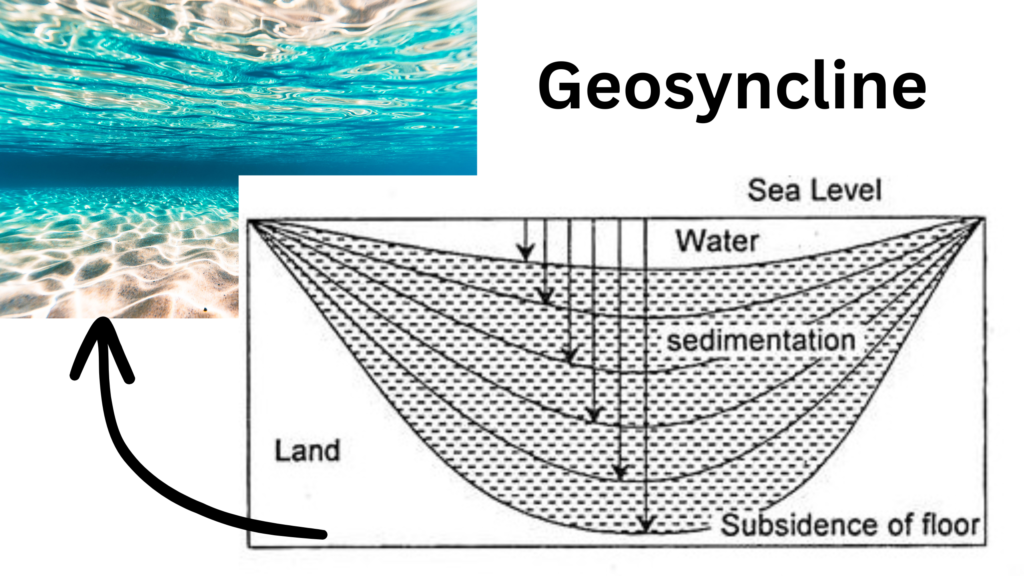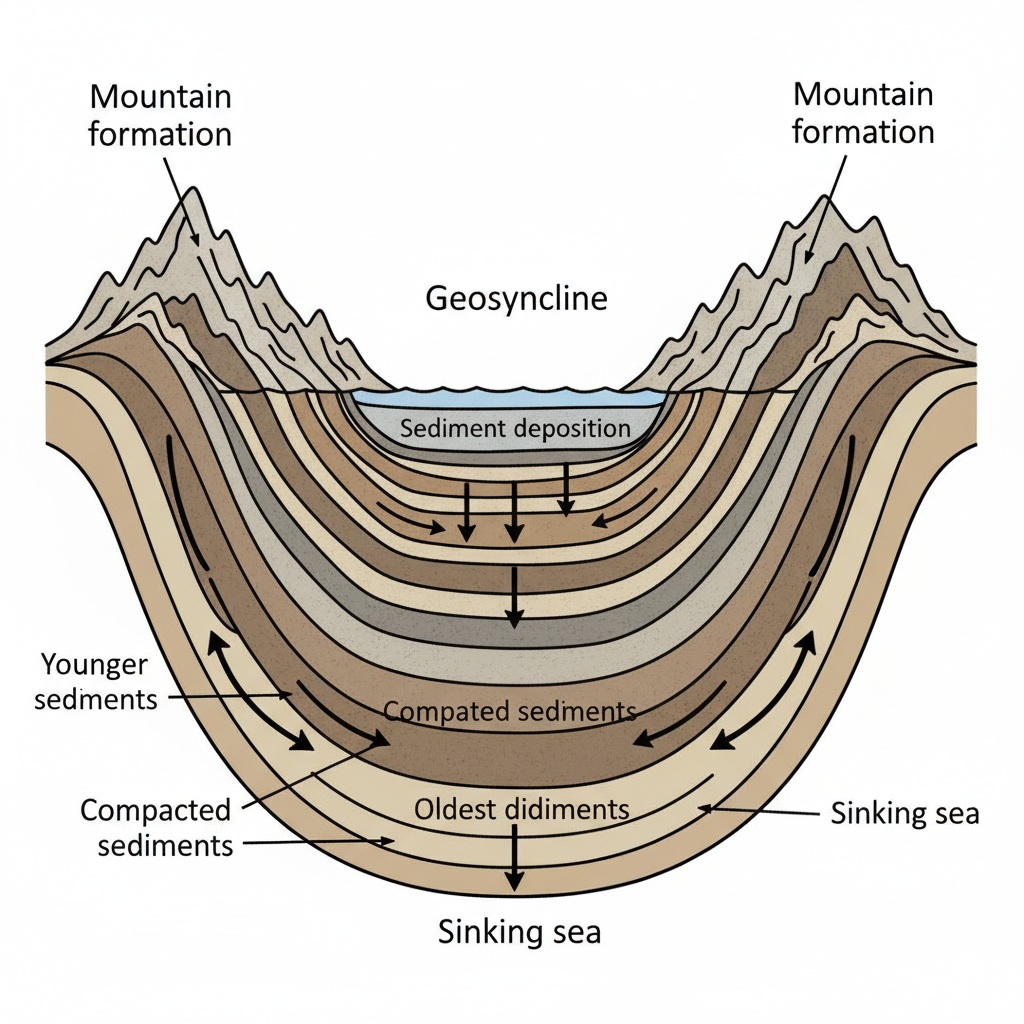A geosyncline is a large-scale depression of the Earth’s crust. It is a structural depression in the Earth’s crust that forms in response to continuous sedimentation, and subsidence. Geosynclines are significant geological features that play a crucial role in the formation of mountain formation, sedimentary basins, and other geological structures.
"The process of subsidence can continue for millions of years until the geosyncline becomes so deep that it reaches the earth’s mantle. "

Table of Contents
What is Geosyncline?
A geosyncline is water depression due to continuous sedimentation. It has now been accepted by majority of the geologists and geographers that all the mountains have come out of the geosynclines and the rocks of the mountains originated as sediments were deposited and later on consolidated in sinking seas, now known as geosynclines.

Formation of Geosyncline
Geosynclines form primarily through tectonic processes involving the movement of lithospheric plates. As plates converge or diverge, the crust undergoes deformation, leading to the development of large depressions or basins.
The formation of a geosyncline follows a general sequence:
-
Initial Subsidence: Due to tectonic plate movements, a section of the crust starts to sink.
-
Sediment Accumulation: Rivers, glaciers, and marine processes deposit thick layers of sediment in the depression.
-
Compression and Folding: As tectonic plates continue to interact, these layers are compressed and folded.
-
Mountain Building (Orogeny): Ultimately, the pressure leads to the uplift of the entire region, forming a mountain range.
Structure
Geosynclines are characterized by their distinctive structure, which typically includes thick accumulations of sedimentary rocks. These sedimentary layers can accumulate over millions of years as sediments eroded from surrounding areas are deposited within the basin.
Sedimentary Deposition
Geosynclines are sites of intense sedimentary deposition. As the basin subsides, it creates accommodation space for sediments to accumulate. The sediments can vary widely in composition, ranging from clastic (such as sandstone, shale, and conglomerate) to chemical and organic deposits (such as limestone and coal).
Tectonic Activity
Geosynclines are often associated with tectonically active regions where significant crustal movements occur. This tectonic activity can include volcanic eruptions, earthquakes, and the deformation of rocks within the basin.
Mountain Building
Over time, the accumulation of sedimentary layers in geosynclines can lead to the formation of thick sequences of rocks. As tectonic forces continue to act on these sedimentary deposits, they may undergo metamorphism, folding, and faulting, eventually leading to the uplift and formation of mountain ranges along the margins of the geosyncline.
Examples of Geosyncline
Some famous examples of geosynclines include the Appalachian Geosyncline in North America and the Himalayan Geosyncline in Asia, both of which played crucial roles in the formation of the respective mountain ranges.
Contribution by Kober
German geologist Kober has presented a detailed and systematic description of the surface features of the earth. His main objective was to establish a relationship between ancient rigid masses or tablelands and more mobile zones or geosynclines, which he called Orogen.
Kober not only attempted to explain the origin of the mountains on the basis of his geosynclinal theory but he also attempted to elaborate the various aspects of mountain building e.g., formation of mountains, their geological history, and evolution, and development. He considered the old rigid masses as the foundation stones of the present continents. According to him present continents have grown out of rigid masses. He defined the process of mountain building or orogenesis as that process which links rigid masse with geosynclines. In other words, mountains are formed from the geosynclines due to the impacts of rigid masses.
Kober’s geosynclinal theory is based on the forces of contraction produced by the cooling of the earth. He believes in the contraction history of the earth. According to him, the force of contraction generated due to the cooling of the earth causes horizontal movements of the rigid masses or forelands which squeeze, buckle and fold the sediments into mountain ranges.
Read: Geography